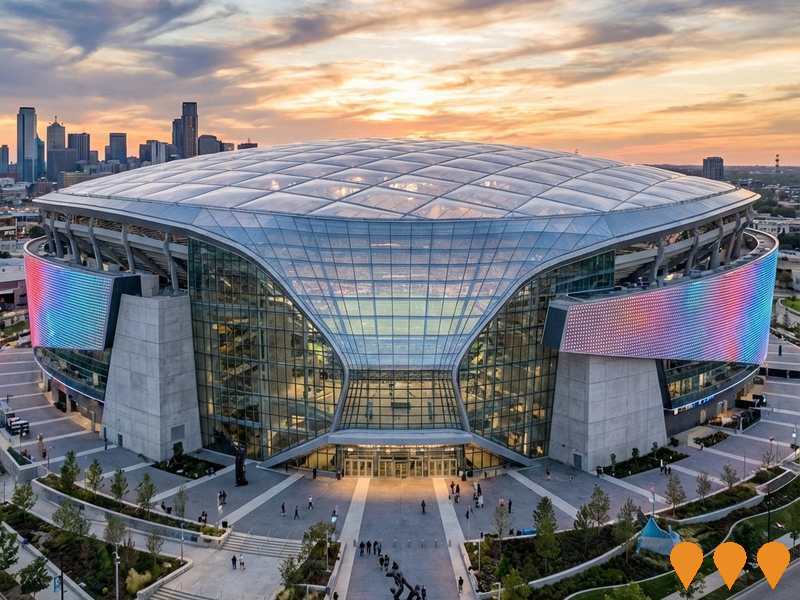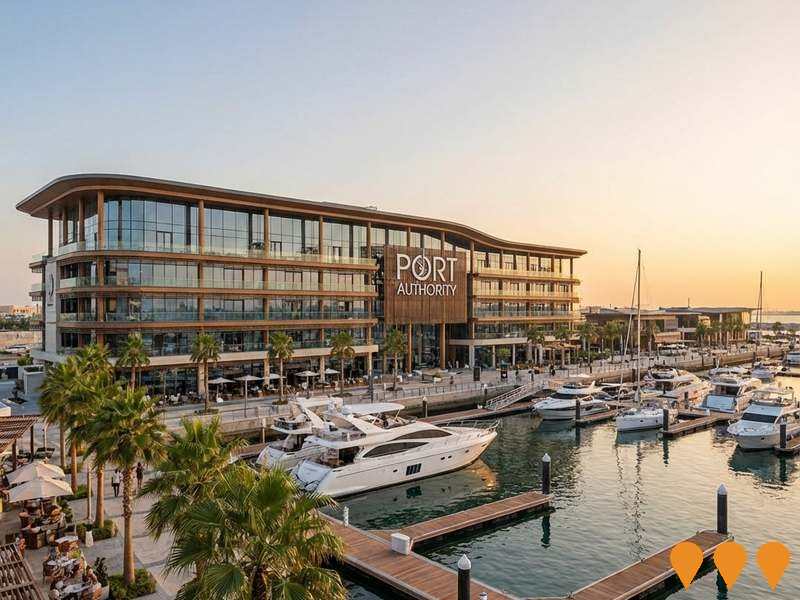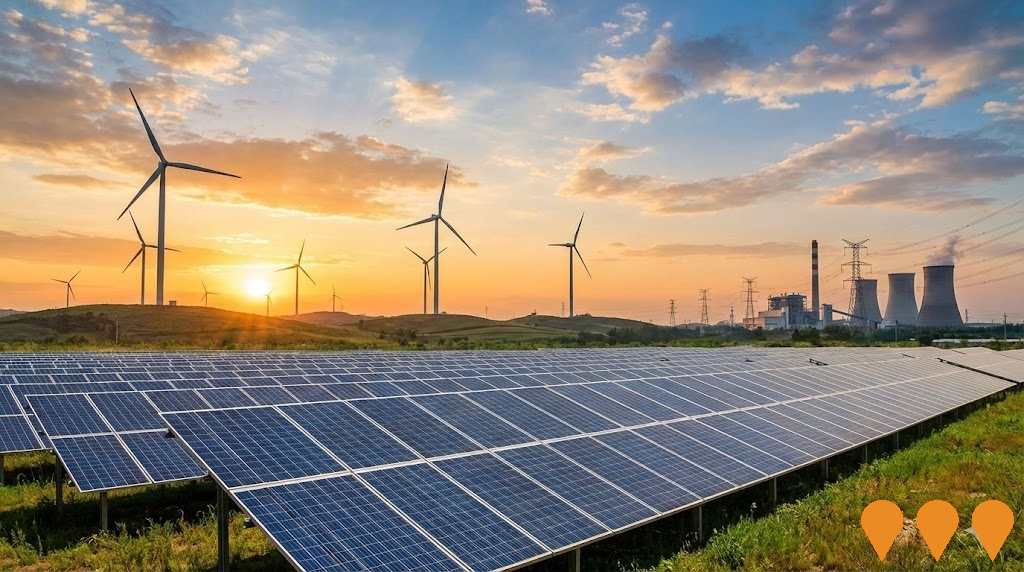Chart Color Schemes
est. as @ -- *
ABS ERP | -- people | --
2021 Census | -- people
Sales Activity
Curious about local property values? Filter the chart to assess the volume and appreciation (including resales) trends and regional comparisons, or scroll to the map below view this information at an individual property level.
Find a Recent Sale
Sales Detail
Population
Biloela has shown very soft population growth performance across periods assessed by AreaSearch
Biloela's population, as per AreaSearch's analysis, is approximately 5787 as of August 2025. This figure represents an increase of 93 people, a 1.6% rise from the 2021 Census which reported a population of 5694. The change was inferred from the estimated resident population of 5847 from the ABS in June 2024 and address validation since the Census date. This results in a density ratio of 306 persons per square kilometer, indicating significant space per person and potential room for further development. Biloela's growth since the 2021 census exceeded that of the SA3 area at 1.4%, positioning it as a growth leader in the region. Overseas migration contributed approximately 56.6% of overall population gains during recent periods, driving primary population growth.
AreaSearch adopts ABS/Geoscience Australia projections for each SA2 area, released in 2024 with 2022 as the base year. For areas not covered by this data and years post-2032, Queensland State Government's SA2 area projections are used, released in 2023 based on 2021 data. However, these state projections do not provide age category splits; thus, AreaSearch applies proportional growth weightings aligned with the ABS Greater Capital Region projections for each age cohort, released in 2023 using 2022 data. Future demographic trends anticipate lower quartile growth of Australia's non-metropolitan areas. Based on the latest population numbers, the area is expected to expand by 178 persons to reach 2041, reflecting a total increase of 4.1% over the 17-year period.
Frequently Asked Questions - Population
Development
The level of residential development activity in Biloela is very low in comparison to the average area assessed nationally by AreaSearch
Biloela has seen minimal construction activity in recent years. Specifically, two new dwellings were approved annually on average over the past five years, totalling twelve approvals. This low level of development is typical of rural areas where housing needs are modest and construction activity is limited by local demand and infrastructure capacity.
It should be noted that with such low approval numbers, yearly growth figures can vary significantly based on individual projects. Biloela's development levels are substantially lower than the rest of Queensland and also below national averages. Recent building activity in the area consists entirely of detached dwellings, reflecting rural living preferences for space and privacy. As of now, there are an estimated 2428 people per dwelling approval in the area, indicating a quiet, low activity development environment.
According to future projections, Biloela is expected to add 238 residents by 2041. If current development rates continue, housing supply may not keep pace with population growth, potentially increasing competition among buyers and supporting stronger price growth.
Frequently Asked Questions - Development
Infrastructure
Biloela has emerging levels of nearby infrastructure activity, ranking in the 28thth percentile nationally
Changes in local infrastructure significantly affect an area's performance. AreaSearch has identified four projects likely to impact this region. Notable projects are Biloela Splash Park, Multiple Dwelling Development, Magavalis Netball Court Upgrades, and Rooming Accommodation Development.
Professional plan users can use the search below to filter and access additional projects.
INFRASTRUCTURE SEARCH
 Denotes AI-based impression for illustrative purposes only, not to be taken as definitive under any circumstances. Please follow links and conduct other investigations from the project's source for actual imagery. Developers and project owners wishing us to use original imagery please Contact Us and we will do so.
Denotes AI-based impression for illustrative purposes only, not to be taken as definitive under any circumstances. Please follow links and conduct other investigations from the project's source for actual imagery. Developers and project owners wishing us to use original imagery please Contact Us and we will do so.
Frequently Asked Questions - Infrastructure
Santos GLNG Project
Large-scale coal seam gas to LNG project comprising upstream gas field development in the Surat and Bowen Basins, gas transmission pipelines, and a liquefied natural gas (LNG) plant on Curtis Island near Gladstone. The project has been operational since 2015 with ongoing drilling and field expansion activities.

Queensland Energy Roadmap Infrastructure
The Queensland Energy Roadmap 2025 is the State Government's strategic plan to deliver affordable, reliable, and sustainable energy. Replaces the former Energy and Jobs Plan, focusing on extending the life of state-owned coal assets, a $1.6 billion Electricity Maintenance Guarantee, and the $400 million Queensland Energy Investment Fund. Key infrastructure includes the CopperString transmission line and new gas-fired generation, while the Pioneer-Burdekin Pumped Hydro project has been cancelled in favor of smaller storage options.
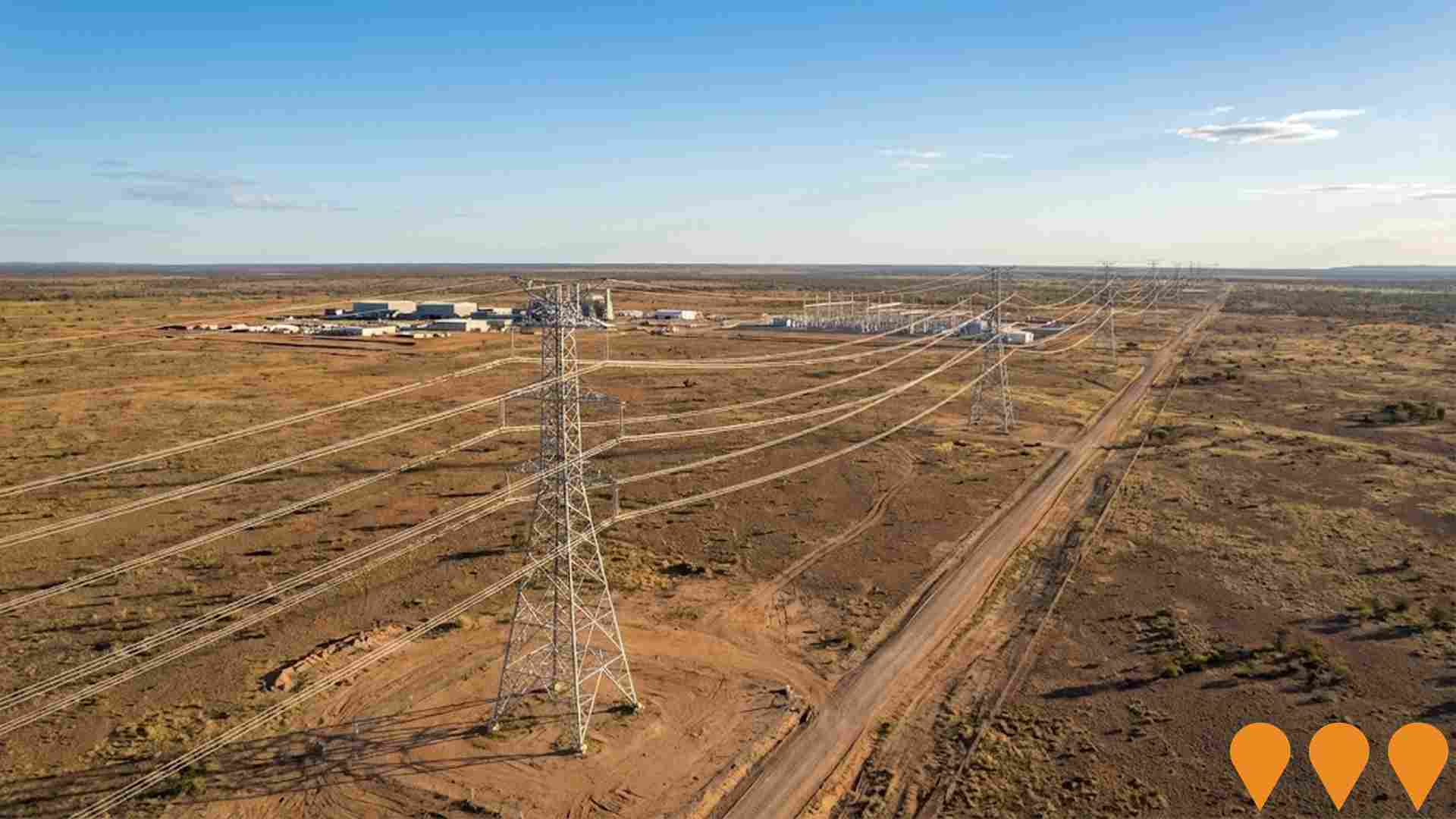
Building Future Hospitals Program
Queensland's flagship hospital infrastructure program delivering over 2,600 new and refurbished public hospital beds by 2031-32. Includes major expansions at Ipswich Hospital (Stage 2), Logan Hospital, Princess Alexandra Hospital, Townsville University Hospital, Gold Coast University Hospital and multiple new satellite hospitals and community health centres.
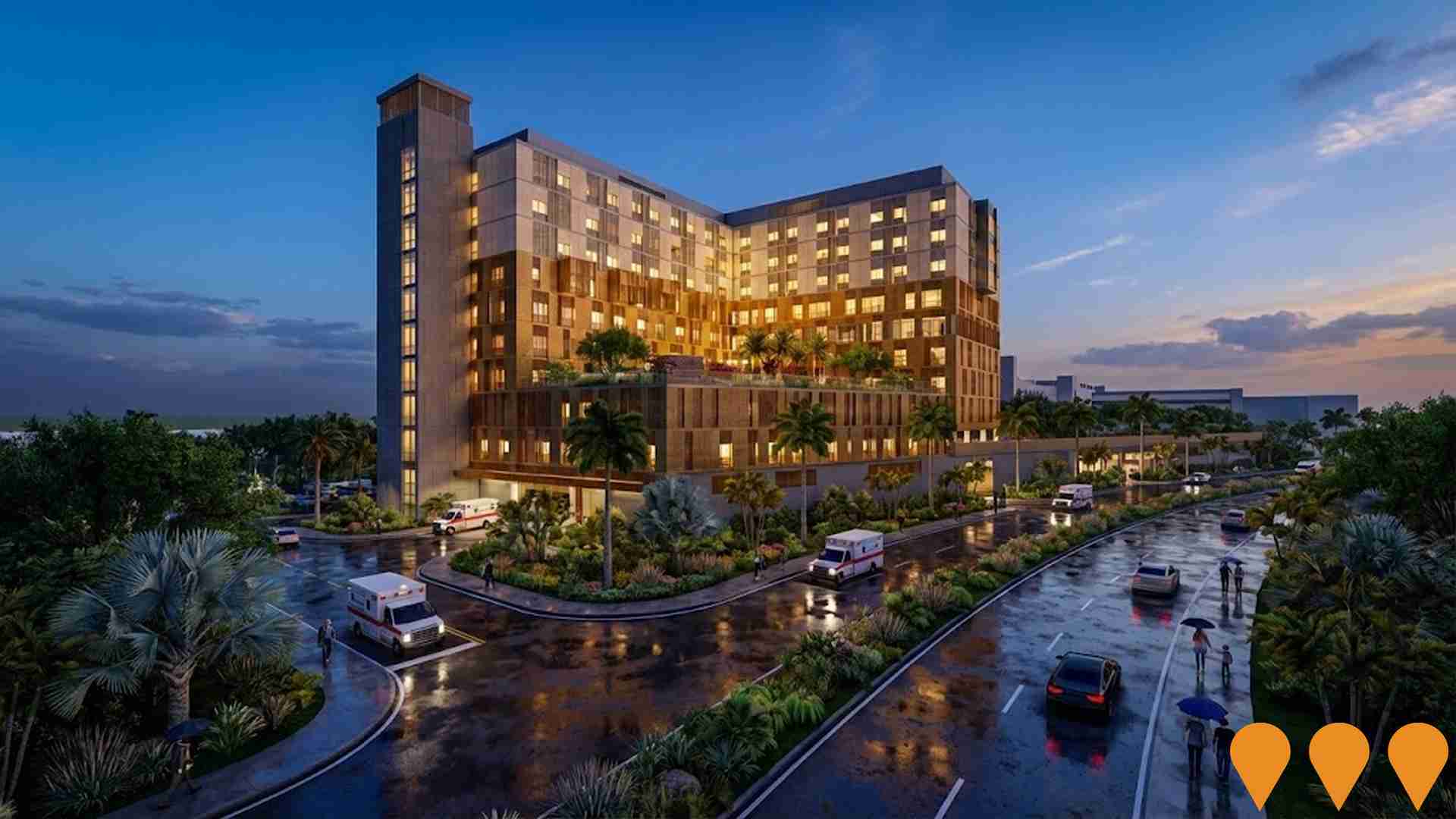
Bruce Highway Upgrade Program
The Bruce Highway Upgrade Program is Queensland's largest road infrastructure initiative, delivering safety, flood resilience, and capacity improvements along the 1,677km corridor from Brisbane to Cairns. The massive investment program includes the $9 billion Targeted Safety Program, major bypass projects (including Gympie, Rockhampton, and Tiaro), bridge replacements, and wide centre line treatments. Jointly funded by the Australian and Queensland governments, works are progressing across multiple sections simultaneously.
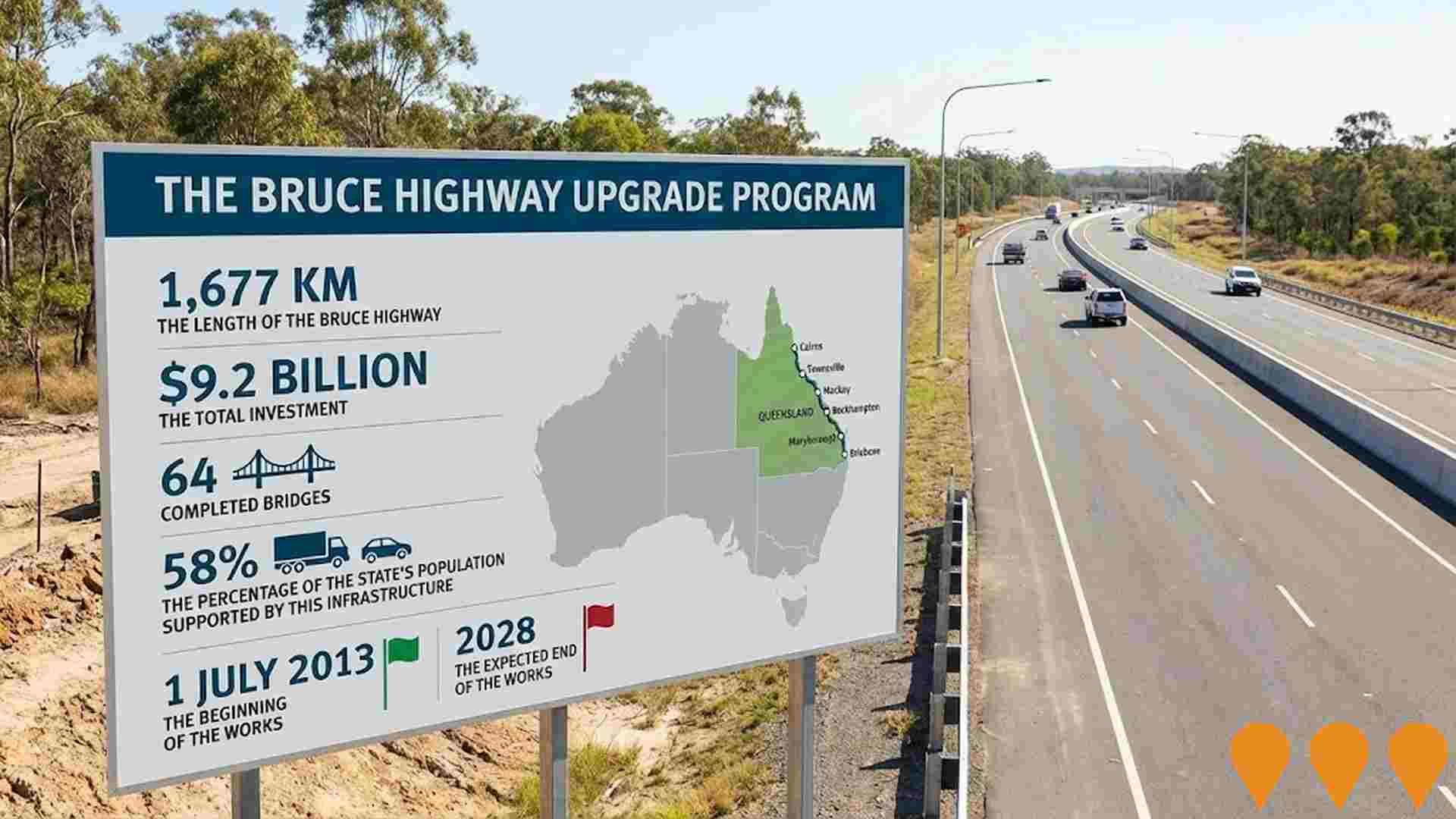
Callide Solar Power Station
A 200MWac solar farm with a 200MW/800MWh battery energy storage system. The project has received development approval from the Banana Shire Council and is located near the existing Callide Power Station. Currently in development phase, the project has the potential to accommodate up to 240MWp of clean solar photovoltaic electricity generation and up to 200MW / 800MWh of energy storage. It secured a Planning Permit from Banana Shire Council in 2023 and an EPBC Act Permit in July 2024.

Gladstone Project
Powerlink Queensland's Gladstone Project (also known as the Gladstone grid reinforcement) is a multi-stage transmission network reinforcement to maintain reliability and security of electricity supply in the Gladstone region following the anticipated retirement of Gladstone Power Station. It supports industrial decarbonisation, electrification of major industries, and integration of renewables from the Central Queensland REZ. Key stages include new 275kV double-circuit lines (Calvale-Calliope River and Bouldercombe-Larcom Creek via new Gladstone West Substation), synchronous condensers, and reactive support equipment. Final Assessment Report submitted June 2025; government review ongoing with construction of Stage 1 expected mid-2026.

Theodore Wind Farm
RWE Renewables Australia is developing the Theodore Wind Farm near Theodore in Banana Shire, central Queensland. The project has State planning approval (DA approved by Queensland SARA on 23 June 2025) and proposes up to 170 turbines (about 1.0-1.1 GW) plus a battery energy storage system planned at 240 MW. Target initial operations are in 2027 with full operations expected by 2029. A potential solar component may be included within the project boundary.

Queensland Inland Road Network Upgrade
An early-stage proposal to upgrade inland Queensland roads, improving safety, productivity, and addressing issues like flooding and deteriorating infrastructure to support regional communities and freight movement.
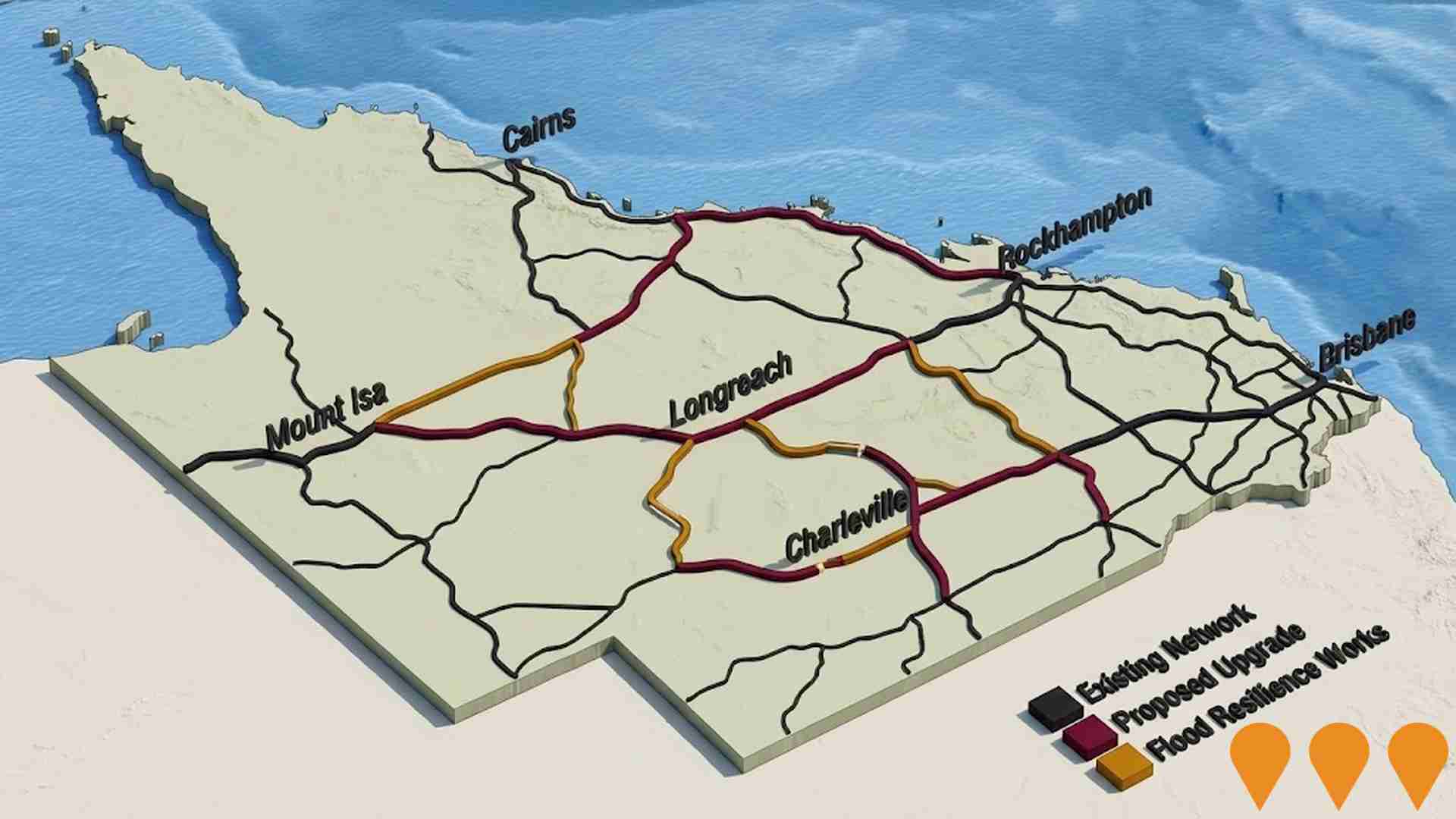
Employment
Employment conditions in Biloela remain below the national average according to AreaSearch analysis
Biloela has a diverse workforce with both white and blue collar jobs, prominently featuring manufacturing and industrial sectors. Its unemployment rate was 4.8% in the past year, with an estimated employment growth of 3.9%.
As of June 2025, 3,407 residents are employed, with an unemployment rate of 4.8%, which is 0.9% higher than Rest of Qld's rate of 3.9%. Workforce participation in Biloela is 62.5%, slightly above Rest of Qld's 59.1%. Key industries include mining, manufacturing, and health care & social assistance. Mining is particularly strong, with an employment share 4.3 times the regional level.
However, health care & social assistance is under-represented, at 9.7% compared to 16.1% in Rest of Qld. Many residents commute elsewhere for work based on Census data analysis. From June 2024 to June 2025, employment levels increased by 3.9%, and labour force grew by 5.0%, leading to a 1.0 percentage point rise in unemployment rate. In comparison, Rest of Qld saw employment grow by 1.8%, labour force expand by 2.0%, and unemployment rise by 0.2 percentage points. Jobs and Skills Australia's national employment forecasts from May 2025 project national growth of 6.6% over five years and 13.7% over ten years. Applying these projections to Biloela's employment mix suggests local growth could be approximately 4.9% over five years and 11.4% over ten years, based on a simple weighting extrapolation for illustrative purposes.
Frequently Asked Questions - Employment
Income
Income analysis reveals strong economic positioning, with the area outperforming 60% of locations assessed nationally by AreaSearch
AreaSearch's latest postcode level ATO data for the financial year 2022 shows Biloela's median income among taxpayers is $55,571. The average income in Biloela is $68,932. Nationally, the median income is lower at $49,717, with an average of $63,096. In Rest of Qld, the median income is $50,780 and the average is $64,844. Based on Wage Price Index growth of 13.99% since financial year 2022, current estimates for Biloela would be approximately $63,345 (median) and $78,576 (average) as of September 2025. Census data indicates household, family and personal incomes in Biloela are at the 61st percentile nationally. In Biloela, 34.5% of the population earn between $1,500 and $2,999 annually, with 1,996 individuals falling into this income range. This pattern is similar to metropolitan regions where 31.7% of residents fall within this income bracket. After housing costs, Biloela residents retain 89.0% of their income, indicating strong purchasing power.
Frequently Asked Questions - Income
Housing
Biloela is characterized by a predominantly suburban housing profile, with a higher proportion of rental properties than the broader region
In Biloela, as per the latest Census evaluation, 88.4% of dwellings were houses while 11.7% were other types such as semi-detached units, apartments, and 'other' dwellings. This compares to Non-Metro Qld's 93.4% houses and 6.6% other dwellings. Home ownership in Biloela stood at 25.6%, with mortgaged dwellings at 33.8% and rented ones at 40.6%. The median monthly mortgage repayment was $1,300, aligning with Non-Metro Qld's average, while the median weekly rent was $260 compared to Non-Metro Qld's $240. Nationally, Biloela's mortgage repayments were lower at $1,300 than Australia's average of $1,863, and rents were substantially lower at $260 compared to the national figure of $375.
Frequently Asked Questions - Housing
Household Composition
Biloela features high concentrations of group households, with a fairly typical median household size
Family households constitute 69.0% of all households, including 30.9% couples with children, 26.5% couples without children, and 10.3% single parent families. Non-family households account for the remaining 31.0%, with lone person households at 27.0% and group households comprising 3.9%. The median household size is 2.5 people, which aligns with the average in the Rest of Qld.
Frequently Asked Questions - Households
Local Schools & Education
Educational outcomes in Biloela fall within the lower quartile nationally, indicating opportunities for improvement in qualification attainment
The area's university qualification rate of 14.9% is significantly lower than Australia's average of 30.4%. Bachelor degrees are the most common at 11.0%, followed by postgraduate qualifications (2.3%) and graduate diplomas (1.6%). Vocational credentials are prevalent, with 43.7% of residents aged 15+ holding them, including advanced diplomas (7.6%) and certificates (36.1%). Educational participation is high, with 33.3% of residents currently enrolled in formal education, including 15.1% in primary, 10.3% in secondary, and 2.3% in tertiary education.
Biloela's four schools have a combined enrollment of 1,282 students and demonstrate typical Australian school conditions (ICSEA: 966) with balanced educational opportunities. The educational mix includes two primary, one secondary, and one K-12 school. School capacity exceeds residential needs at 22.1 places per 100 residents compared to the regional average of 16.7, indicating that the area serves as an educational center for the broader region.
Frequently Asked Questions - Education
Schools Detail
Nearby Services & Amenities
Transport
No public transport data available for this catchment area.
Frequently Asked Questions - Transport
Transport Stops Detail
Health
The level of general health in Biloela is notably higher than the national average with prevalence of common health conditions low among the general population though higher than the nation's average across older, at risk cohorts
Biloela shows better-than-average health outcomes with a low prevalence of common conditions among its general population, but higher than the national average for older and at-risk groups.
Approximately 54% (~3,107 people) have private health cover. The most common medical conditions are asthma and mental health issues, affecting 8.3 and 7.0% of residents respectively. About 72.2% report no medical ailments, compared to 70.9% in the rest of Queensland. Biloela has a lower proportion of residents aged 65 and over at 13.8% (797 people), compared to the 16.5% in the rest of Queensland.
Frequently Asked Questions - Health
Cultural Diversity
Biloela ranks below the Australian average when compared to other local markets across a number of language and cultural background related metrics
Biloela had a cultural diversity level below average, with 79.0% citizens, 85.1% born in Australia, and 89.5% speaking English only at home. Christianity was the main religion, comprising 61.4%. This compares to 64.5% across Rest of Qld.
For ancestry, top groups were Australian (32.3%), English (28.6%), Irish (7.1%). Notably, German was overrepresented at 6.0% (vs regional 6.5%), Dutch at 1.6% (vs 1.0%), and Filipino at 1.7% (vs 1.0%).
Frequently Asked Questions - Diversity
Age
Biloela's population is slightly younger than the national pattern
Biloela's median age is 36, lower than the Rest of Queensland figure of 41 and Australia's median age of 38. Compared to the Rest of Queensland average, Biloela has a notably higher proportion of people aged 25-34 (14.8%) and a lower proportion of those aged 65-74 (7.3%). Between 2021 and now, the population aged 0-4 grew from 6.5% to 7.2%, while the 5-14 age group declined from 14.8% to 13.4% and the 45-54 age group decreased from 12.6% to 11.4%. Demographic projections suggest significant changes in Biloela's age profile by 2041. The 25-34 age cohort is projected to expand by 201 people (24%), from 856 to 1,058. Conversely, both the 55-64 and 5-14 age groups are expected to see reduced numbers.
